I am making two histograms by using moving averages and binning. I have gotten a moving average of 18k data points , most that are 0 values ,by using excel.
This is what I was looking to get done through R
I would like to use R in order to make a script that will produce a histogram of how many ‘counts’ a device received. I have tried :
hist(y, 20)
hist (y, )
plot (y, x)
and now , after three days of learning this is what I got :
y <- AltWithAllCounts$Cts.p.ms
x <- AltWithAllCounts$Alt
barwidth <- 100
#how many bins
block <- rep(seq(1,length(x)/barwidth),each=barwidth)
#makes bins
a <- aggregate(y,by=list(block),sum)
#creates sum of bins
altmean <- aggregate(x,by=list(block),mean)
#finds mean altitude of each bin
avgCount <- a$x/barwidth
#averages out each bin
plot(altmean$x,avgCount,xlab="Altitude",ylab="Counts")
# creates scatterplot of mean bins
avgBinCnt <- data.frame(altmean$x,a$x)
write.csv(avgBinCnt,file="avgBinCnt.csv",)
The idea is that I want to the average sum of 20 values and plot it over time , which is x
x y
851304 0
851404 0
851503 0
851603 1
851703 0
851804 0
851904 0
852107 0
852203 0
852303 0
922503 0
922603 2
922703 0
922804 0
922904 0
923107 0
923203 0
923303 0
923404 0
923504 0
923604 0
923703 0
923803 0
923904 0
924108 0
924205 1
1441603 0
1441703 0
1441804 0
1441904 0
1442107 1
1442203 1
1442304 0
1442404 4
1442504 0
1442605 1
1442703 6
1442803 8
1442904 0
